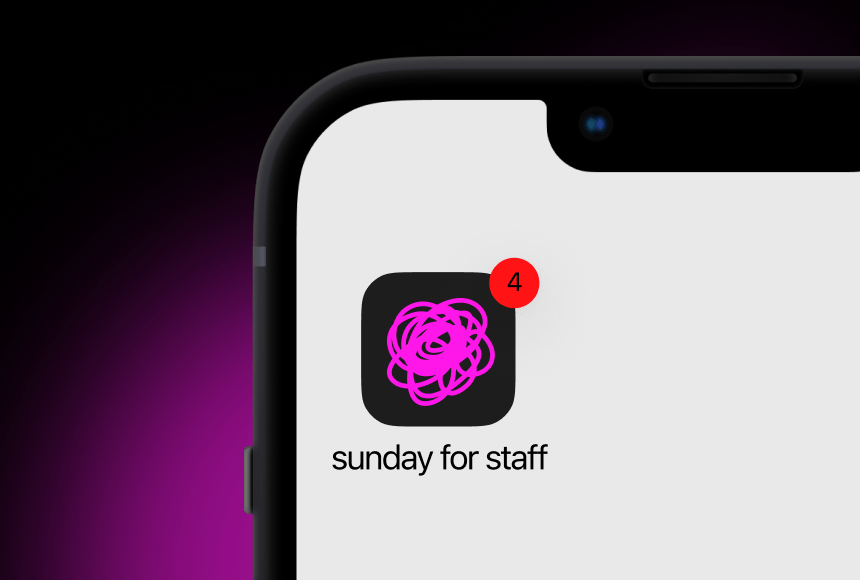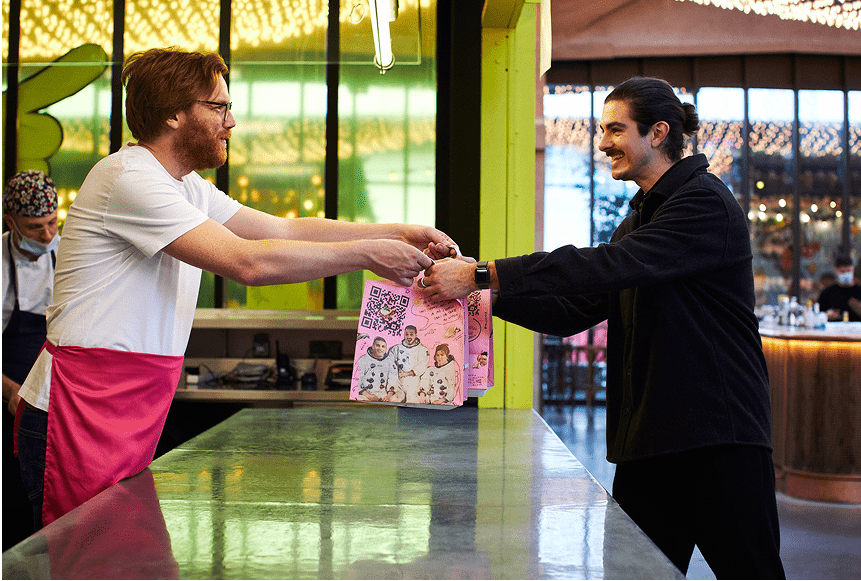
Automatic Tip Suggestions: Enhancing Your Restaurant’s Service in the Coming Years
The Growing Tipping Culture in the UK
For many UK restaurant owners, tipping has traditionally been a bit of a grey area. Unlike in some other countries, such as the United States, tipping in the UK has historically been left to the customer’s discretion, and there’s a long-held understanding that anything beyond paying for the meal is completely optional. However, if you’ve been a restaurant owner for a while, you might have noticed a shift: tips have steadily become an expected part of the overall experience.
In fact, in recent years, the emphasis on tips has grown. Whether motivated by a desire to reward good service or simply following the modern trend, diners are more aware than ever that leaving a gratuity is a way to show appreciation—or even to help offset wages in some cases. A 2022 survey by YouGov (source) found that 60% of British diners typically leave a tip in restaurants, a number that appears to be inching upward each year.
As we head towards 2025, this shift has sparked growing interest in “automatic tip suggestions,” displayed on card payment terminals or digital payment platforms. You’ve likely seen or heard of these integrated systems that prompt guests to leave a set tip percentage—5%, 10%, 15%, or even 20%—right at the point of payment. The question on every restaurant owner’s mind is: Are automatic tip suggestions a good idea in 2025? Let’s explore the potential benefits, concerns, and ethical considerations to help you decide if this approach suits your establishment.
What Do We Mean by Automatic Tip Suggestions?
Automatic tip suggestions (sometimes called “suggested gratuities”) are prompts that appear on a digital payment interface—often a card payment machine, smartphone app, or QR code payment software—encouraging diners to select from a range of tip percentages or amounts. Think of it as a gentle nudge: “Would you like to add 10%, 15%, or 20%?” The diner can confirm, adjust, or decline the suggestion. The concept has become widespread in many international markets, and the UK is catching up.
On the surface, these suggestions are an easy way to boost tipping. Instead of the guest having to do mental arithmetic or rummage for loose change, the system provides handy calculations right there: a total with one tap. Many digital payment services, including some QR code platforms like sunday, handle this automatically, letting the guest quickly finalise the bill and confirm any tip. In addition, advanced solutions can also offer an option for leaving a custom tip amount, so nobody feels constrained by the predetermined suggestions.
The Upside: Potential Benefits for Restaurant Owners
Whether you run a cosy café in Bristol or a bustling gastropub in London, you’re likely interested in any measure that can improve the guest experience and streamline operations. Here’s why automatic tip suggestions might be worth considering:
- Boost in Tipping Revenue: Studies show that customers are more inclined to leave a tip when presented with a quick and easy prompt. Automatic suggestions subtly shift the default from “Should I tip?” to “How much will I tip?” This simple nudge can potentially increase the size and frequency of gratuities.
- Improved Staff Satisfaction: If customers leave bigger or more consistent tips, servers tend to feel more motivated and rewarded for their efforts. This can lead to lower staff turnover and a better morale in the dining room.
- Streamlined Service: Having a clear tip suggestion at the end of the meal reduces the awkward moment of fumbling with cards or counting coins. It speeds up the payment process, creating a smoother guest experience and freeing staff for other tasks—a real bonus during peak hours.
- Enhanced Perception of Professionalism: Automatic suggestions can convey a modern, tech-savvy image. Customers see that you’re using up-to-date payment methods, fully integrated with your operations. In 2025, leveraging innovative technology can help set your restaurant apart.
- Encouraging “Fair Wages” Culture: There’s an ongoing conversation about fair pay across the hospitality industry. While tipping is not a perfect solution to wage concerns, automatic tip suggestions can help top up staff earnings in a transparent way, which in turn may reduce tension around wages.
Potential Pitfalls of Automatic Tip Suggestions
Before you embrace automatic tip prompts, there are some nuances and possible drawbacks to weigh up. After all, every restaurant is unique, and what works for a trendy tapas bar in Manchester may not fit as seamlessly into a fine dining establishment in Edinburgh.
- Risk of Guest Discomfort: Automatic suggestions might appear pushy if not implemented sensitively, especially if higher percentages like 20% feel excessive for some UK diners. The last thing you want is for customers to resent the “optics” of being pressured into tipping.
- Local Cultural Variations: Even within the UK, attitudes towards tipping differ. In some areas, tipping might be standard, while in others, it’s less common. An automatic suggestion suitable in one region might come across as off-putting in another.
- Perceived Lack of Personal Touch: Some guests prefer the old-school ritual of handing cash to a server or deciding on their tip at their own pace. Digitising everything can feel too impersonal for these diners, especially if they see hospitality as a human-centred experience.
- Staff vs. Management Transparency: If your staff suspect that tips are not being handled fairly—or that management might be taking a cut—this can create distrust. Automatic tip suggestions should be paired with a clear policy for distributing gratuities, so staff know exactly how tips are allocated.
- Legal and Ethical Considerations: Restaurants must ensure they follow the latest employment laws regarding tips. For instance, in the UK, new legislation aims to prevent businesses from withholding tips. Any automatic suggestion should comply with regulations and maintain fairness.
Ethical Considerations: Nurturing Trust and Fairness
Introducing a suggested gratuity is more than just a strategic move. It’s also an ethical decision that can impact your restaurant’s reputation. When guests feel they are being treated fairly and staff feel respected, it can foster a warm, inviting environment that boosts loyalty.
In 2025, we expect more spotlight on transparency regarding money matters. According to government announcements (source), the UK seeks to ensure tips go directly to workers, strengthening the legal framework around tipping practices. If you implement automatic tip suggestions, consider displaying a brief message explaining how the tip is allocated: for example, “All tips go directly to our staff,” or “Tips are shared among the team.” This openness can reassure guests that their generosity is being properly used.
Another ethical dimension is inclusivity. Not every diner can afford a 15% or 20% tip. Making sure there’s a “Custom Tip” or “No Tip” option not only respects personal budgets, but it also shows empathy and genuine hospitality. By offering choice, you demonstrate that your restaurant isn’t manipulating diners’ guilt or social pressure but is simply providing a convenient suggestion.
Implementing Automatic Tip Suggestions: Best Practices
If you decide to bring automatic tip suggestions to your restaurant, a strategic roll-out can help avoid the pitfalls and maximise the rewards. Based on our experience and industry insights, here are some best practices:
- Choose Appropriate Tip Ranges: Instead of defaulting to a single high percentage, consider offering a modest range—5%, 10%, 15%, plus a custom option. This signals that you understand different budgets and cultural preferences.
- Ensure a Clear Opt-Out: Make it easy for guests to edit or skip the tip. For instance, have a clear “No Tip” button. This reduces any impression of forced tipping.
- Train Your Staff: Your servers or hosts should be prepared to explain how tips are processed. This transparency builds trust. Encourage them to emphasise the positive aspects, such as fairness and convenience, rather than applying pressure.
- Communicate Your Policy: Post a short note about your tipping policy on menus, table cards, or at the digital payment interface. A simple message can reassure guests about where their money goes.
- Test and Adapt: If you notice guests consistently selecting the lowest tip or skipping it, consider adjusting your suggested amounts. Gather feedback from servers who interact with guests frequently—they often have direct insight into diners’ reactions.
One of the easiest ways to implement these suggestions is through digital payment solutions such as sunday. Instead of dealing with clunky devices, sunday’s QR code-based payment system enables a smooth and fast checkout while offering gentle tip suggestions—or no suggestion at all, if that’s your preference. You can customise the interface to align with your restaurant’s branding and culture.
Calculating the Business Impact
So how much of a boost, exactly, can you expect from integrating automatic tip suggestions? Though the increase can vary widely, many restaurants that use these prompts see anywhere from a 20% to 40% jump in total tips—anecdotal data from various hospitality forums supports this range. This is largely because guests tend to select the “middle” or “standard” suggestion if one is offered—often 10% or 12.5%—instead of potentially tipping less or forgetting altogether.
For a simple example, imagine your restaurant serves an average of 100 covers per day with an average bill of £25 per person, and you currently receive around 7% in tips. With automatic suggestions, if that average increases to 10%, you’re talking about an extra £2.50 in tips per table. Multiply that by 100 covers a day: that’s £250 in additional daily tips, or around £7,500 a month. While these figures are purely illustrative, they highlight the potentially significant effect on your team’s total earnings—and by extension, their motivation.
But keep in mind, numbers alone don’t tell the entire story. What is also important is how the staff and your customers feel. Will automatic tip suggestions irritate loyal patrons? Will staff see it as a fair approach that benefits their livelihood? Balancing hard data with human factors is the real key to making an informed decision.
Culinary Metaphor: Seasoning to Taste
Implementing automatic tip suggestions is like seasoning a dish: it’s about finding just the right flavour profile without overpowering the main ingredients. Too little seasoning, and your dish risks falling flat. Too much, and your diners walk away feeling overwhelmed. In the same vein, too timid an approach might mean missing out on an opportunity to boost staff morale and revenue, while an aggressive or inflexible method might leave guests feeling uncomfortable.
Like a perfectly balanced dish, the ideal tipping structure respects cultural norms, business needs, and staff well-being. Automatic tip suggestions provide a convenient framework—acting as the “recipe,” if you will—but the final blend depends on you, the chef (or in this case, the restaurateur). Listen to your diners’ feedback, keep your team’s feelings in mind, and don’t be afraid to, pardon the pun, stir things up if you sense a better balance is possible.
Case Study: A London Bistro’s Experience
To illustrate, consider a fictional but realistic scenario: Clara, the owner of a small bistro in central London, decided to implement automatic tip suggestions during the busy summer season of 2023. Initially, she noticed some long-time regulars were a bit taken aback by the new system. A few discreetly asked if her staff were suddenly underpaid, prompting them to wonder why the restaurant felt the need for digital tipping prompts.
Over the following weeks, Clara explained in a short message on table tents: “Thank you for dining with us. All tips go directly to our team, and they’re deeply appreciated—but entirely optional!” She also set the default tips to 5%, 10%, and 15%, with an option for “Other.” This approach resulted in a modest improvement in tips, from an average of 8% to around 11%. Staff expressed that, on busy nights, the digital tip suggestions streamlined checkout and boosted overall morale.
Clara eventually made small adjustments—like emphasising the “optional” aspect and adding a short explanation. By 2025, the bistro’s customers were fully accustomed to the prompt. The staff felt more appreciated and reported fewer awkward conversations about tipping. For Clara, the success was reflected in good reviews, positive staff feedback, and increased tips that brought in additional income and helped internal camaraderie.
Understanding the Role of Technology
As contactless payments become the norm, technology can accelerate or complicate your restaurant’s workflow. The UK is experiencing a boom in QR code payments, new card payment terminal devices, and frictionless checkouts. By 2025, these methods could be standard. Many diners already expect a straightforward, tech-forward payment system; they’re not in the mood to stand around waiting for a machine while a server toggles through multiple screens.
QR code payment solutions, like sunday, not only streamline how the customer pays but also enable you to offer tip suggestions in a user-friendly manner. By scanning a code at their table, the guest can handle the entire process—bill preview, tip selection, and payment—on their own phone. The result: fewer mistakes, a faster turnover of tables, and more satisfied customers. Technology here acts as a powerful assistant, freeing up your staff to focus on delivering delightful service rather than running back and forth with card machines.
Additionally, as the UK continues to adopt new laws to safeguard workers’ tips, digital payment solutions can offer a transparent record of gratuities. By keeping a digital trail of every transaction, you can reassure your staff that everything is above board. This sets a strong foundation for trust in an era when fairness and clarity are paramount.
Tables, Data, and Transparency
Sometimes, a table can help illustrate the differences between digital automatic tip suggestions, traditional tipping, and no-tipping policies. Here’s a simple overview:
| Method | Benefits | Challenges |
|---|---|---|
| Automatic Tip Suggestions |
|
|
| Traditional Tipping |
|
|
| No-Tipping Policy |
|
|
This simple comparison highlights the trade-offs. Automatic tip suggestions offer convenience and potentially higher gratuities, balanced against the need for tactful implementation.
Finding Your Restaurant’s “Secret Ingredient”
At the end of the day, the behind-the-scenes approach to tipping can shape the atmosphere of your entire restaurant. Automatic tip suggestions might be that “secret ingredient” giving your business a memorable edge, provided they’re introduced with thought and empathy. If you decide to go ahead with it, remember to:
- Stay transparent.
- Offer choice.
- Communicate the benefits to both diners and staff.
- Keep an open mind to feedback and be ready to tweak the details.
Like experimenting with a new dish, implementing tip suggestions is a process. Start small, assess the feedback from guests and employees, and fine-tune to find that harmonious balance.
A Forward-Thinking Ending: Embrace the Change
In an era where dining expectations are evolving at breakneck speed, it’s sensible to embrace systems that can enhance both the customer experience and staff well-being. Automatic tip suggestions, managed correctly, offer a modern, transparent approach to gratuities that can shape positive relationships between you, your staff, and your guests. After all, diners want a pleasant, conflict-free end to their meal—while your staff deserve fair recognition for a job well done.
Deciding whether to introduce these suggested gratuities is likely to involve a bit of trial and error. Yet for many restaurants, the payoff is a welcomed boost in tips, stronger morale, and improved workflow. Ultimately, you’re the best judge of how your clientele and employees will respond. If you approach automatic tip suggestions with warmth, clarity, and fairness, you may just discover that 2025 marks a turning point in how UK diners engage with the tipping ritual.
FAQs on Automatic Tip Suggestions
Below are some frequently asked questions that restaurant owners often grapple with when considering automatic tip suggestions.
How complex is it to install a system with automatic tip suggestions?
Many modern card payment terminals and digital payment solutions already come with the functionality to suggest tips at checkout. In cases where you opt for QR code-based platforms like sunday, the setup usually involves adding your menu, customising tip percentages, and printing table-specific QR codes. Most of this can be done in a matter of days, without heavy IT intervention.
Will automatic tip suggestions motivate staff, or cause them to demand higher wages?
Automatic tip suggestions can certainly improve staff motivation by providing a more consistent flow of gratuities. However, it’s crucial to position these suggestions as a complement to fair wages, rather than a substitute. Communicating openly with your team about how tips are shared and why you’re implementing this system can help avoid misunderstandings. It’s a tool to enhance service culture, not a reason to reduce base salaries.
What if my regulars react negatively?
When established customers are accustomed to one way of paying, any change can feel abrupt. The key is clear communication: let them know that tipping is optional, and you’re simply offering a convenient new approach. You could even send a short announcement in your newsletter or social media channels. Over time, most regulars adjust, especially if they see that staff are genuinely benefiting.
Can I keep my tip suggestions flexible?
Yes. You can easily change suggested percentages and the order in which they appear. If 15% feels high for your local clientele, start with a modest range—5%, 10%, 12.5%. Monitor guest feedback and tip selection patterns, and adjust as needed.
Does the law in the UK regulate how tips must be handled?
Yes, there are regulations ensuring that tips go to staff rather than the business. While each establishment might have slightly different methods for distributing tips (e.g., a tronc system or shared pool), it’s vital to comply with legal standards. Being upfront about your tip distribution policy—especially through signage or short disclaimers on the payment screen—gives guests confidence in your practices.
Find out more today
Drop us your details below and we’ll reach out within the next 24
More tips means a better service.
3X more tips mean 3X better guest-experience, and 3X better staff-retention.




